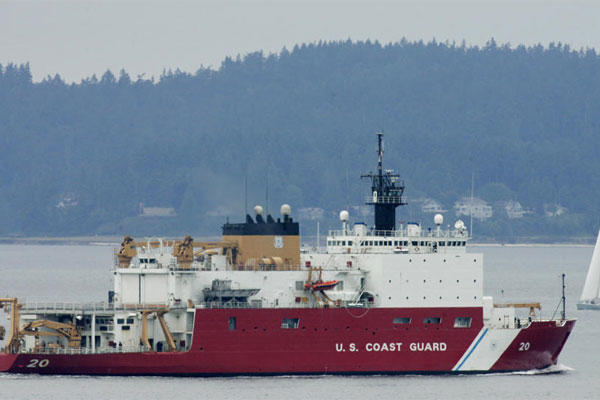The Coast Guard needs $1 billion to build a new polar icebreaker. Members of Congress at a recent hearing said the service wasn't going to get it. At least not from them.
Although a Navy representative and officials from other federal agencies testified to the importance of attaining a new icebreaker for the Arctic, none of them promised to help the Coast Guard out with the pricey project.
"You're not going to get the $1 billion from this Congress to build a new icebreaker. That's simple. You're not going to get it," Rep. Don Young, R-Alaska, told a senior Coast Guard official at a House Transportation Committee Coast Guard and maritime transportation subcommittee hearing.
Committee members said they were skeptical of funding a new polar ship because the agencies have failed to come up with a collaborative budget plan. Represented at the hearing were leaders from the Department of State, Department of Commerce, National Science Foundation and the State of Alaska.
While committee members agreed that outside agencies needed a new icebreaker to guarantee security and access during Arctic missions, they criticized the agencies' unwillingness to contribute funds to the Coast Guard.
"The gap between what is needed to effectively implement the Arctic strategy and what is requested and funded is huge, growing and, frankly, doesn't work," said Ranking Member Rep. John Garamendi, D-Calif.
As navigable waters in the Arctic continue to expand, pressure is being put on U.S. forces - especially the Coast Guard - to increase presence in the region and keep the homeland safe, said Chairman Rep. Duncan Hunter, R-Calif. He was pessimistic about the current state of U.S. icebreakers to carry out this mission and feared that rival nations had more determination to develop polar vessels.
"The U.S fleet of icebreakers is in a dismal state ... we have one that can't go in the thick ice at all," Hunter said.
The Coast Guard is the sole federal agency responsible for managing the nation's polar icebreakers. Currently, the U.S. operates just two: the Healy and the Polar Star. The Healy is a medium-sized ship mostly used for scientific research. The Polar Star is the lone heavy icebreaker.
Vice Adm. Peter Neffenger, vice commandant of the Coast Guard, said those vessels are becoming dated. The Polar Star is expected to last only another six to nine years. These vessels are essential for securing the high seas, protecting natural resources and enforcing maritime regulation, he said.
Russia maintains a fleet of nearly 40 icebreakers and even China, a non-Arctic nation, has one currently under development, Hunter said. Though the Coast Guard has been working with 10 other federal agencies to develop requirements for a new icebreaker, it has yet to identify where in its budget it will find approximately $1.2 billion to construct it, he added.
Neffenger said there has been agency coordination and that documentation for acquiring new vessels is being worked on, but funding needs to become a priority because the "demand for presence won't go away."
"The Navy is not putting money towards it. Homeland Security is not putting money towards it," Hunter continued. "If it's so important, why aren't we doing anything?"
Rear Adm. Jonathan White, oceanographer and navigator of the Navy, said the service needs icebreakers. But when committee members asked if the Navy plans to provide the Coast Guard with funds, White said its budget did not support it.
"It's a team approach that we do for all the operations . . . but icebreaking was given to the Coast Guard," he said.
The vessels are also critical to conduct scientific research and collect Arctic resource data, said Kelly Falkner, deputy director of the office for polar programs at NSF. And while the foundation reimburses the Coast Guard for allowing it to operate the Healy during the summer months, Falkner said it does not plan on contributing any of its $7.6 billion annual budget to help build a new icebreaker.
"We need icebreaking services. We don't need a full-time heavy icebreaker at our beck and call and we don't have the resources to support such," Falkner said.
Young said because the organizations were unwilling to contribute to new vessel funding, they should lease them from the private sector instead. He insisted this was a better alternative because it was unlikely the agencies would receive the funding to construct any new ships.
Neffenger explained that there were no heavy icebreakers available for rent, and that leasing a ship - instead of building it - was a short-term solution. There is "no competitive advantage or cost advantage in leasing," he said.
The agencies argued that the development of modem icebreakers was a key component to achieving the goals set out in the National Strategy for the Arctic Region, which was released by President Obama in May.
Hunter said the icebreaker issue remains at a standstill because agencies are declining to support the Coast Guard. What is important to acquiring new vessels and furthering Arctic interests is each organization's willingness to contribute money, as opposed to just missions.
"It's all talk. There's no action," he said.





























